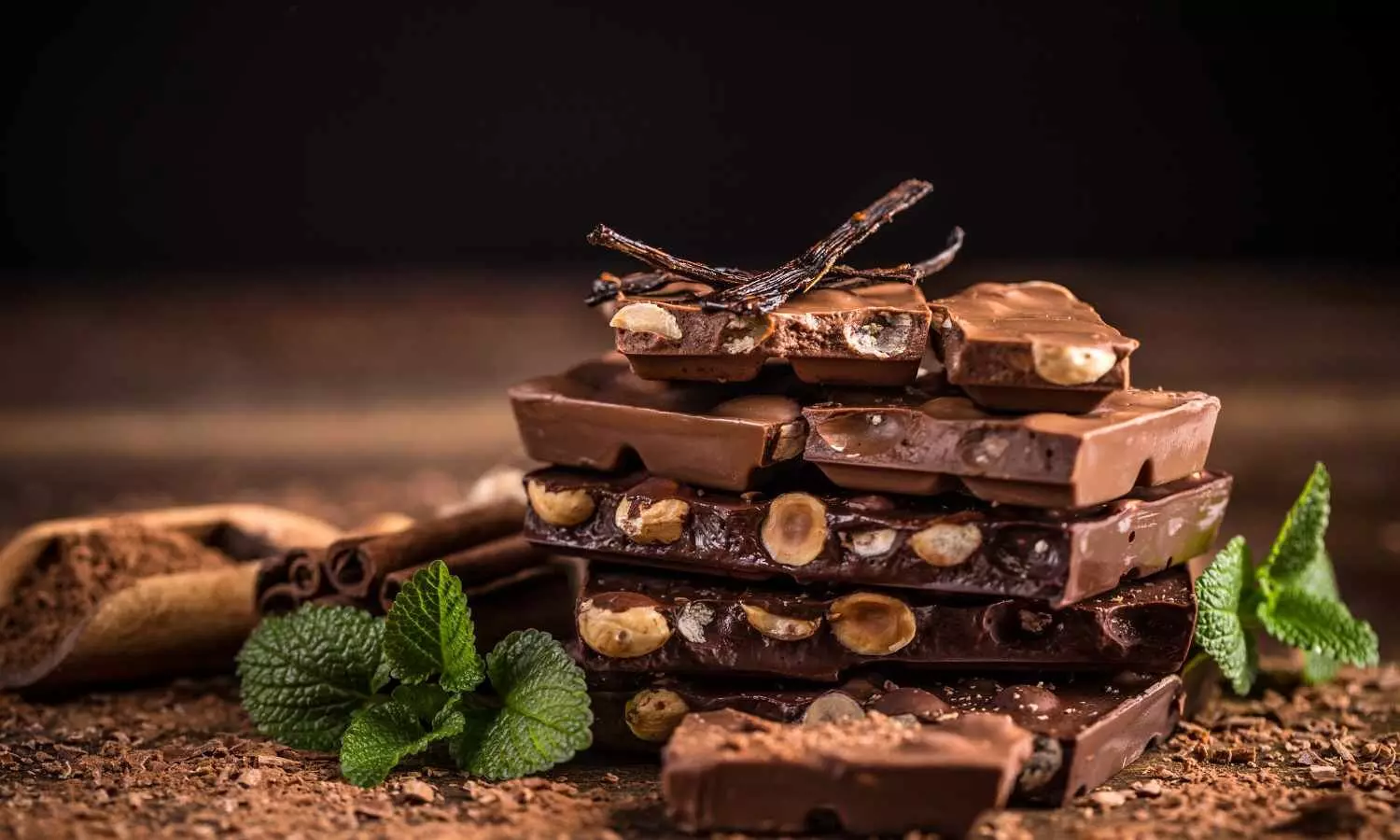Premium chocolates find flavour with consumers
Premium chocolates are resonating strongly with Indian consumers—demand for premium, artisanal and health-conscious options is rising steadily, driven by growing disposable incomes, evolving taste preferences, and the allure of unique flavours, sustainable sourcing, and online accessibility.
Premium chocolates find flavour with consumers

The global premium chocolate market size was estimated at USD 31.87 billion in 2024 and is projected to reach USD 40.60 billion by 2030, growing at a CAGR of 4.3% from 2025 to 2030. The major factor propelling the growth of premium product ranges is continuous innovation by manufacturers among products, which pushes the envelope toward various new flavors to attract consumers.
The world's most expensive chocolates aren't overpriced treats they're edible masterpieces crafted from extinct cacao varieties, French truffles worth more than gold, and techniques perfected over generations. From 4,000-year-old Ecuadorian genetics to Swiss gold-leaf perfection, each offers an experience so extraordinary that regular chocolate will never taste the same again. These aren't impulse purchases they're investments in once in a lifetime flavor journeys. Ready to learn what makes these chocolates worth their astronomical prices? Here's your guide to the world's most exclusive chocolate experiences.
Consumers are increasingly willing to pay more for products that offer superior ingredients, artisanal craftsmanship, and unique flavors. Premium chocolates, often made with high-quality cocoa, organic ingredients, and innovative recipes, align with this desire for a more sophisticated and indulgent product experience. This shift toward premium products is also fueled by the growing appreciation for luxury and experiential consumption, where consumers seek not just a product but an experience that satisfies their sensory and emotional needs.
Another significant factor contributing to the rise in demand for premium chocolates is the increasing focus on health-conscious choices. As consumers become more mindful of their diets, many are turning to dark chocolate varieties, which are rich in antioxidants, may support heart health, and are seen as a more healthful alternative to milk chocolate. Premium dark chocolate, typically containing higher cocoa percentages and lower sugar content, appeals to consumers seeking a guilt-free indulgence. In addition, many premium chocolate brands emphasize clean labels, offering products with fewer additives and preservatives, which aligns with the growing preference for natural, minimally processed foods.
In addition to these factors, luxury gifting has become a major contributor to the rise in premium chocolate consumption. Chocolates have long been a favored gift, and in recent years, there has been a shift towards gifting high-quality artisanal products. Premium chocolates, with their elegant packaging and high-end ingredients, are seen as thoughtful, sophisticated gifts for special occasions like holidays, birthdays, or corporate events. This trend toward gifting, combined with the growing popularity of experiential and emotion-driven purchases, makes premium chocolates an attractive option for consumers looking to treat themselves or others to something indulgent, In addition many premium chocolate brands emphasize clean labels, offering products with fewer additives and preservatives, which aligns with the growing preference for natural, minimally processed foods.
Milk premium chocolate accounted for a revenue share of 46.7% in 2024. Consumers are increasingly viewing premium milk chocolate as an affordable luxury, aligning with the rising trend of indulgence in food products. Premium chocolates are perceived as both a treat and a sensory experience, and this has led to higher demand in both developed and emerging markets. Milk chocolate traditionally contains higher sugar and fat content than dark chocolate. The premium category is witnessing a shift towards “healthier” milk chocolate options. Brands are offering products with reduced sugar, organic ingredients, and free-from labels (gluten-free, non-GMO, etc.). This has been driven by the increasing consumer preference for clean-label products and guilt-free indulgence.
The dark premium chocolate segment is expected to grow at a CAGR of 4.8% from 2025 to 2030. Dark chocolate is often marketed as a healthier alternative to milk chocolate due to its higher cocoa content and lower sugar levels. Consumers are increasingly aware of its health benefits, such as being rich in antioxidants, improving heart health, and reducing stress. For instance, brands such as Lindt & Sprüngli have emphasized the health benefits of their premium dark chocolate products through their corporate communications. They have continuously introduced high-cocoa-content dark chocolates, such as their 85% and 90% cocoa bars, which cater to health-conscious consumers.
The world's most expensive chocolates aren't overpriced treats they're edible masterpieces crafted from extinct cacao varieties, French truffles worth more than gold, and techniques perfected over generations. From 4,000-year-old Ecuadorian genetics to Swiss gold-leaf perfection, each offers an experience so extraordinary that regular chocolate will never taste the same again. These aren't impulse purchases they're investments in once in a lifetime flavour journeys.

